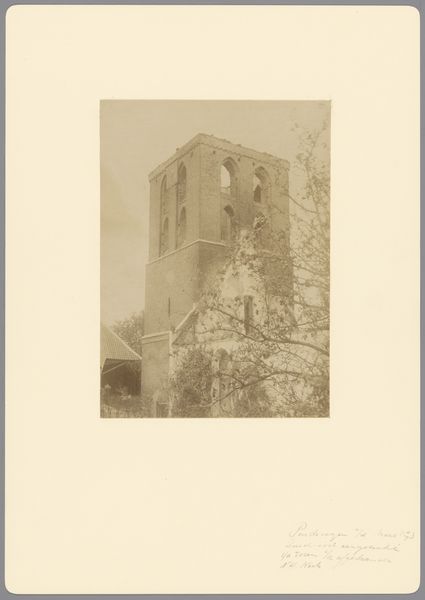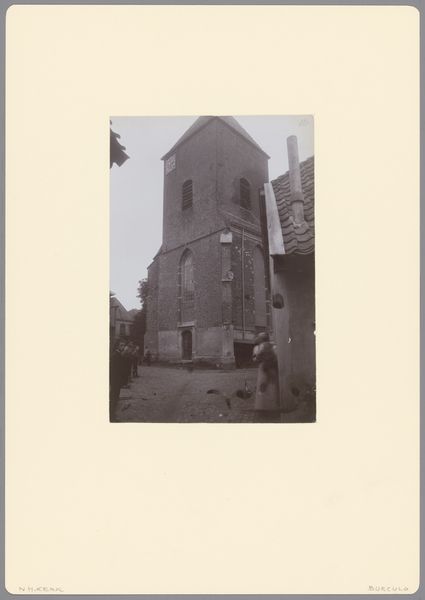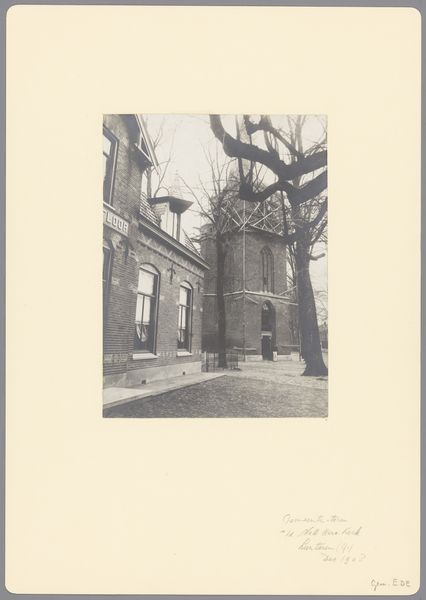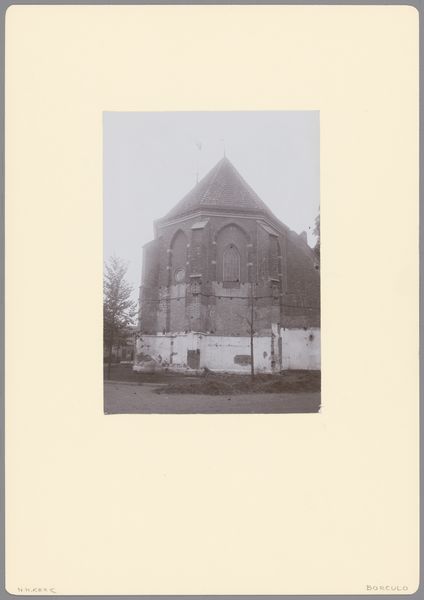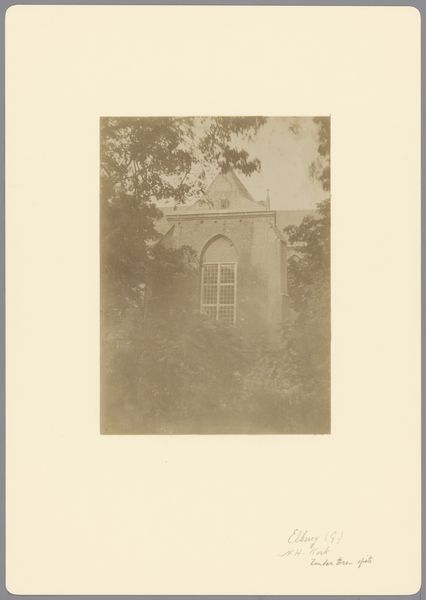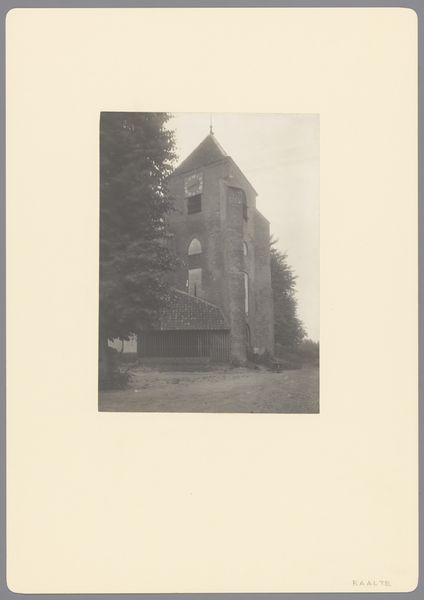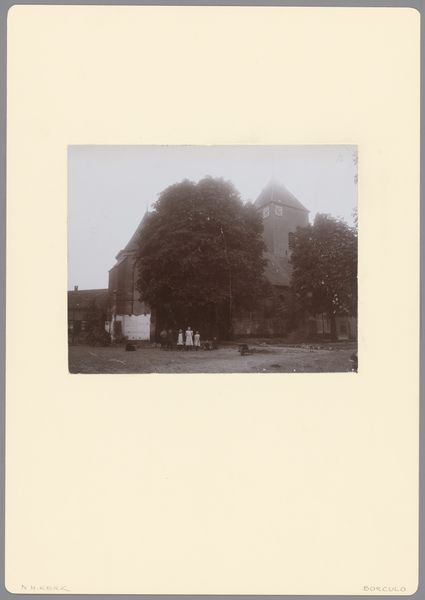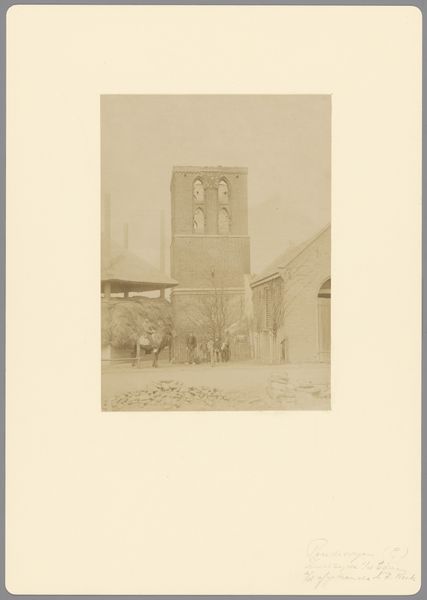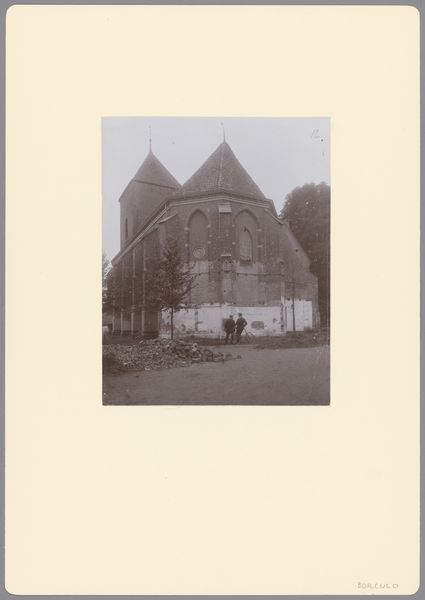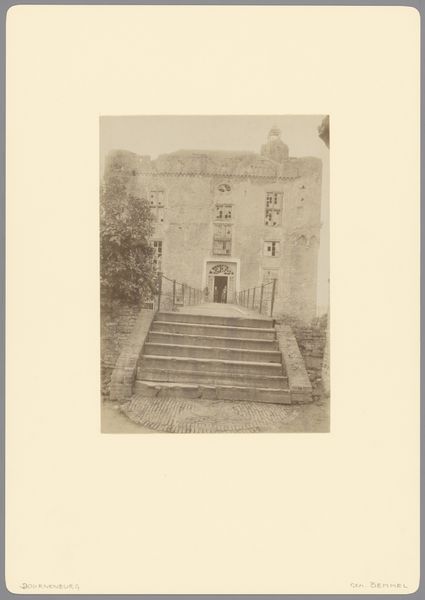
Dimensions: height 218 mm, width 157 mm
Copyright: Rijks Museum: Open Domain
Curator: This image, dating back to 1907, is titled "Toren van de Hervormde Kerk te Garderen," or "Tower of the Reformed Church at Garderen." Editor: My initial impression is that it evokes a sense of fading grandeur, a relic overtaken by time and nature. The monochromatic palette certainly contributes to this mood. Curator: Absolutely. And that ties into the social function of religious architecture at the turn of the century. Churches, often the tallest structure in a village like Garderen, were central, not just spiritually, but also served as social anchors, particularly for women and marginalized communities seeking solace. Editor: It's interesting how the materiality is highlighted – the rough texture of the stone contrasts with the delicate forms of the birch trees. What kind of labor and resources would have been needed for such a building? Did local materials shape its form? Curator: It’s likely that the stone was locally sourced. You can almost see the collective labor, the community effort required to erect something so monumental. Consider, too, the potential for internal divisions, particularly in a religiously segmented society: class distinctions, access to materials, religious affiliations all would influence construction. Editor: I wonder how its placement affected the village layout, economy, and potentially any preexisting social stratifications. What implications would the choice of specific materials have for its meaning and durability, but also on its aesthetic significance? Curator: Excellent points! It's worth noting that Reformed Churches were sometimes built in plainer style compared to other denominations as an outward manifestation of certain Protestant ideals of modesty and rejection of excessive adornment. That might explain the stark contrast of tower against trees. Editor: Ultimately, art is labor. It reveals the social and economic conditions under which the thing came into existence. We must continue to unpack these intersections and ask who truly benefited from the production of such work. Curator: Examining art through intersecting historical and cultural lenses can only enrich the story—especially in the way an artist engages with social context. Editor: Indeed, reflecting upon materiality, labor, and historical production truly exposes the multifaceted narratives ingrained within artworks, like this tower amidst nature.
Comments
No comments
Be the first to comment and join the conversation on the ultimate creative platform.
